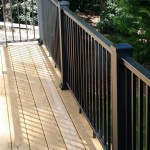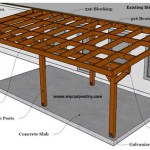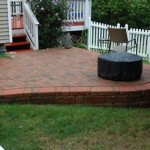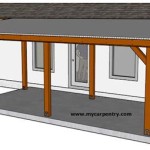How to Build a Concrete Patio on Uneven Ground
A concrete patio is a durable and stylish addition to any home, offering a versatile space for entertaining, relaxing, or simply enjoying the outdoors. However, uneven ground can present a significant challenge to constructing a level and stable patio. This article will guide you through the process of building a concrete patio on uneven ground, outlining the necessary steps to ensure a successful outcome.
1. Prepare the Site
The first step is to prepare the site for construction. This involves clearing the area of any vegetation, debris, and existing landscaping features that may interfere with the patio. Once the area is cleared, it is crucial to determine the level of unevenness in the ground and assess the required leveling measures. A simple way to assess the slope is to attach a level to a long piece of lumber and run it across the area. Mark the high and low points to gauge the extent of leveling needed.
If the ground is only slightly uneven, you may be able to level it using a combination of topsoil and compacted gravel. For more significant slopes, consider using a combination of compacted fill material and a concrete base. It may be necessary to excavate sections of the ground to create a consistent base for the patio.
2. Create a Solid Base
A solid base is essential for the longevity and stability of your concrete patio. It will help to distribute the weight of the concrete evenly and prevent cracking or settling over time. This base can be constructed using a combination of compacted gravel and sand.
Start by digging a trench for the base, taking into account the desired thickness of the patio. The trench should be at least 4 inches deep for a standard patio. Next, fill the trench with compacted gravel, using a hand tamper or plate compactor to ensure proper compaction. A layer of compacted sand should be applied over the gravel, providing a smooth and level surface for the concrete.
3. Construct the Forms
Forms are temporary structures that define the shape and size of your concrete patio. They are typically made of wood, steel, or plastic and are placed around the perimeter of the patio. The forms must be securely anchored to the ground to prevent movement during the pouring process. For uneven ground, you may need to use shims or other material to create a level foundation for the forms.
To ensure a level patio, use a level to confirm the forms are properly aligned. Maintain straight lines and consistent heights to create a visually appealing and functional patio. Before pouring the concrete, take the opportunity to adjust the forms as needed. If you are pouring the concrete in sections, consider creating expansion joints to permit movement and prevent cracking. These joints are typically created using strips of material that are placed within the formwork.
4. Pour and Finish the Concrete
With the forms in place, it is time to pour the concrete. It is advisable to consult with a concrete supplier to determine the appropriate mix and volume of concrete for your project. The concrete should be poured in layers, ensuring proper compaction to eliminate air pockets. A vibrator can be used to compact the concrete, ensuring a smooth and dense finish.
Once the concrete is poured, it is time to finish the surface. This involves using various tools to achieve the desired finish, such as a trowel, float, or edger. For a smooth and polished finish, use a trowel to smooth out the surface. For a more textured finish, consider using a broom or other tools. The finishing process should be done with care and precision to ensure a visually appealing patio. It is essential to cure the concrete properly, allowing it to harden and reach its full strength.
5. Finish and Maintenance
After the concrete has cured for the recommended time period, you can remove the forms and begin finishing the patio. This may include sealing the concrete to protect it from stains and weathering, applying a decorative coating, or adding landscaping features. Proper sealing will help to prolong the life of your patio and enhance its appearance.
Regular maintenance is essential for maintaining the beauty and functionality of your concrete patio. This may include sweeping away debris, removing stains, and applying sealant as needed. With proper care, your concrete patio will provide years of enjoyment for you and your family.

Building A Surface Deck Over An Uneven Concrete Patio

Ideas For Building Concrete Garage Foundation On Sloping Hillside Home Learning Examples

How To Lay Decking On Uneven Ground Pi Gardening

How To Build A Shed Base On Uneven Ground Tiger Sheds

How To Build A Shed Base On Uneven Ground Tiger Sheds

Back Yard Patio On Sloped Terrain Small Garden Backyard

How To Prep Form Pour A Concrete Slab For Beginners Start Finish

How To Pour Concrete On Uneven Ground All You Need Know

How To Form A Concrete Slab On Unlevel Ground Ehow

Concrete Slab For Shed On Uneven Ground Doityourself Com Community Forums
Related Posts








